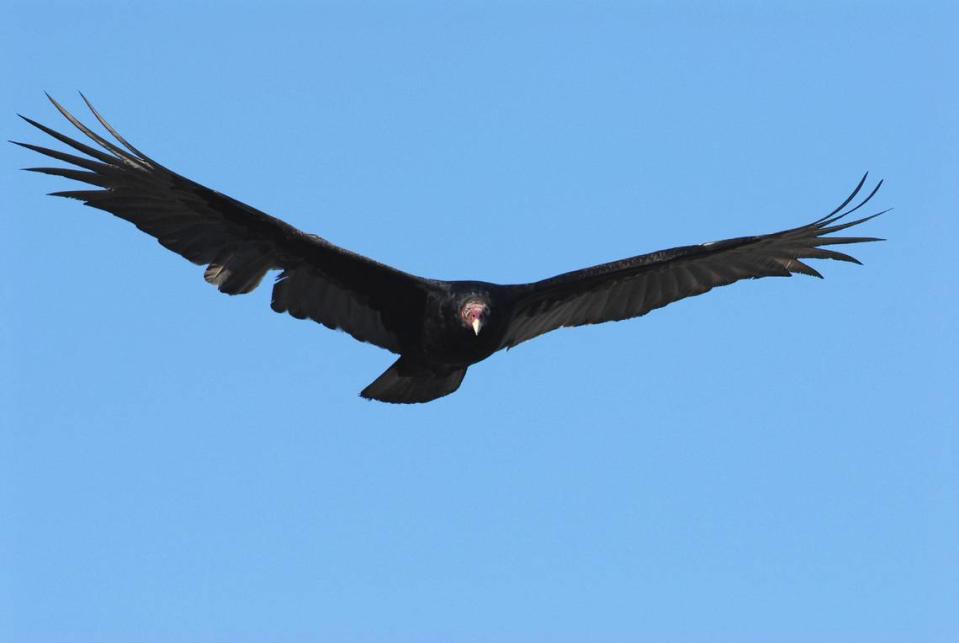Dozens of vultures got stranded in the waters of the Florida Keys. What happened?
Mass whale and dolphin strandings are common in the Keys. But turkey vultures?
Those scary birds that circle above their lifeless prey, then dive-bomb to feast on dead flesh, roadkill and rotting stuff in the dumpster down below?
It’s rare, but vulture strandings are a thing. One happened on Monday, according to local marine mammal rescue nonprofit Dolphin Research Center on Grassy Key.
Workers at the center were out conducting research in the water on the Gulf of Mexico side of Marathon, in the Middle Keys, when they noticed a vulture struggling in the water just offshore.
They called the Marathon Wild Bird Center, and workers there told them that when there’s one vulture in the water, there’s usually more.
And there were. Dozens more.
“Sure enough, they were all over the place,” said Kelly Grinter, director of the bird center.
The rescue
The Dolphin Research Center team went to work on the water and gathered almost 30 of the 60 struggling scavenger birds. The others were rescued by officers with the Florida Fish and Wildlife Conservation Commission and local fishermen, Grinter said.
“Turkey vultures don’t swim, so staff took them on board and contacted Marathon Wild Bird Center to evaluate the birds,” said dolphin center spokeswoman Allie Proskovec.
Why strandings happen
Such aquatic strandings happen here and there, Proskovec said.
“The reason isn’t clear, but the birds sometimes suffer blunt-force trauma from hitting the water, or simply are cold and waterlogged, without the ability to to lift themselves out of the water,” she said. “These events may be caused by a strong down draft pushing them into water.”
Grinter said she’s only witnessed one other vulture stranding time in her 28 years with the center.
“It doesn’t happen very often,” said Grinter, 55.
The collective effort to save the birds was successful, although seven of them did not make it. Two were brought in to the bird center dead, and five ended up dying on Wednesday, Grinter said.
The rest, she said, recovered enough to be released back into the wild.
About turkey vultures

Turkey vultures are migratory birds, and “are not here all year,” Grinter said.
Despite not being some of the most glamorous birds that hang out in the Keys — like frigates and herons, or the cuter ones, like pelicans and cormorants — turkey vultures are essential for a healthy ecosystem, Proskokev said.
As “carrion eaters” — a dead-thing diet — they remove pathogens from the environment and “help keep the ecosystem disease free,” she said. “Their digestive systems contain a very strong acid that destroys many of the harmful substances found in dead animals.”


